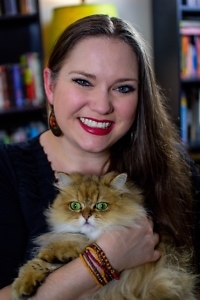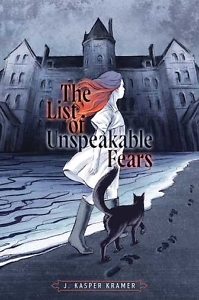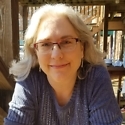The First Step to Being Brave
A young girl in 1910 New York wrestles with fears both real and imagined
“Not everything is a monster,” admits 10-year-old Essie O’Neill in Chattanooga writer J. Kasper Kramer’s new middle grade novel, The List of Unspeakable Fears. “But some things are. Some things you can look at just once and regret your whole life that you saw them.”

It’s 1910 and Essie’s family are immigrants from Ireland, settled in New York City. Essie and her mother are desperately poor, especially since her father’s death three years earlier. Essie is shocked when her mother suddenly announces that she has married a German doctor, the director of a hospital located on a small island in the East River where people with dangerous contagious diseases, such as cholera, smallpox, and tuberculosis, are sent to be quarantined and receive treatment. She and Essie will soon move there to join him.
It’s a bitter pill to swallow for Essie, especially since dying of an incurable disease claims a pretty high position on her “List of Unspeakable Fears.” It was her mother who suggested that writing down her fears might help to combat them. Soon she had pages and pages of entries — so many that her mother and teacher began to worry about her “morbid obsessions.” “I’d tried to explain that I wasn’t interested in death,” Essie insists. “I was interested in avoiding it. But no one seemed to understand the difference.” Now she’s got the list organized alphabetically: from Alligators, Ants, and Anything with a Sharp Point; to Bats and Big, Hairy Noses; to Candles, Cats, and Creaky Closets. It’s her own terror manifesto and Essie keeps it handy to provide reassurance when she feels overwhelmed.
Once the ferry deposits Essie and her mother on the desolate shore of their new home, nicknamed “Plague Island,” she is predicably terrified. Even the excitement of her first ride in an automobile and the opulence of her stepfather’s mansion — complete with electric lights and indoor plumbing — cannot assuage her fears. And meeting her stepfather, Dr. Blackcreek, does nothing to calm her nerves. Not only is she put off by his coldly formal manner, she quickly becomes convinced that he is responsible for the murders of numerous nurses reported missing from the island over the years.
 She sets out to prove to her mother that they have fallen into the hands of a dangerous criminal, and meeting Mary Mallon, the infamous “Typhoid Mary,” only fuels that fire. Because she has no symptoms, Mary doesn’t believe it was she who infected the families for whom she worked as a cook. She is furious at having been condemned to life on the island and blames Dr. Blackcreek for keeping her there. As if interacting with Mary isn’t cause enough for worry, Essie is soon subjected to disembodied voices, a bell without a clapper that rings out in the night, a ghostly apparition — even a human skull washed up on the beach. It’s enough to push an already nervous Essie to new levels of anxiety and paranoia.
She sets out to prove to her mother that they have fallen into the hands of a dangerous criminal, and meeting Mary Mallon, the infamous “Typhoid Mary,” only fuels that fire. Because she has no symptoms, Mary doesn’t believe it was she who infected the families for whom she worked as a cook. She is furious at having been condemned to life on the island and blames Dr. Blackcreek for keeping her there. As if interacting with Mary isn’t cause enough for worry, Essie is soon subjected to disembodied voices, a bell without a clapper that rings out in the night, a ghostly apparition — even a human skull washed up on the beach. It’s enough to push an already nervous Essie to new levels of anxiety and paranoia.
In her author’s note, Kramer admits that the COVID-19 pandemic helped shape The List of Unspeakable Fears in more ways than one. First, she uses the story as a platform to write about anxiety disorders — a diagnosis she shares with Essie. Second, although the types of infectious diseases that threaten today bear different names from those of 1910, our fear of the unknown and inability to protect loved ones from a terrible fate are very much the same. Essie’s fears echo our own and bring the story to life in a way that might not have been possible outside a pandemic. Third, Mary Mallon’s distrust of science, persistent rejection of medical advice, and disregard for the ways her behavior might impact others will ring all too familiar to modern readers.
There is hope for Essie, though, who finally learns an important lesson that many have had to face recently: “I know that being scared is the first step to being brave.”
[Read Chapter 16‘s 2020 interview with J. Kasper Kramer here.]

Tina Chambers has worked as a technical editor at an engineering firm and as an editorial assistant at Peachtree Publishers, where she worked on books by Erskine Caldwell, Will Campbell, and Ferrol Sams, to name a few. She lives in Chattanooga.


